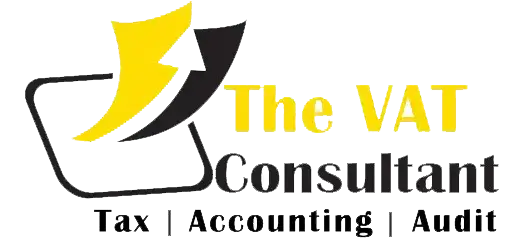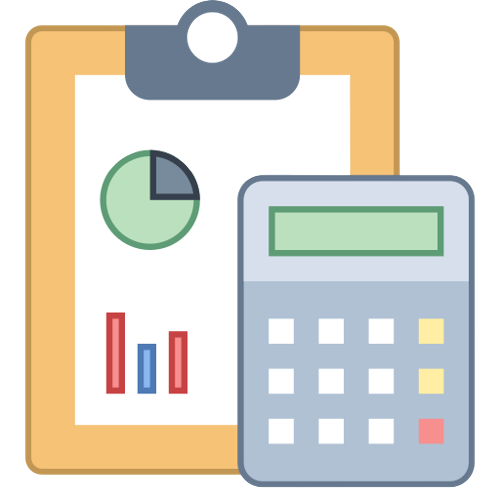Import of goods is a very common situation in business. There are many options for importing goods. These can be roughly divided into two categories:
a. Registrant imports goods
b. Imported goods by non-registered persons
As a general rule, we know that when importing goods into the UAE, the importer is responsible for paying VAT in a reverse charge. In addition, depending on the type of person who wants to import goods, there are many cases of importing goods. In each case, the method of payment of VAT is different. In this article, let’s review the summary of each of these plans and the method of VAT payment when they are introduced.
Imported goods from UAE registered persons
Listed below are the various situations in which people registered under VAT import goods and the method of VAT payment in each case.
Plan’s VAT payment method
Import taxable goods into the UAE mainland to apply for a VAT refund and pay the VAT payable when the refund is paid
Import goods into the UAE and then export the goods to another country
Transfer of taxable goods from one designated area for value-added tax to another designated area for value-added tax, VAT is not applicable
The value-added tax for importing taxable goods into the designated area of value-added tax is not applicable
Import of goods by non-registered persons in the UAE
The following lists the various situations in which people who have not been registered for value-added tax import goods and the method of payment of value-added tax in each situation.
Plan’s VAT payment method
Pay when importing taxable goods into the UAE mainland
Import goods into the UAE and then export to another country (not affected by tariff suspension)
Transfer taxable goods from one VAT designated area to another VAT designated area Provide electronic guarantee
Import taxable goods into the UAE under tariff reduction
The value-added tax for importing taxable goods into the designated area of value-added tax is not applicable
Passengers carrying taxable goods worth not more than AED 3,000
Import returned goods (goods exported from the UAE) to mainland UAE
UAE nationals living abroad for the first time or emigrating to the UAE, importing second-hand personal and household items
The military and internal security forces import taxable goods into the mainland
Therefore, when a person registered under VAT imports goods, no matter what VAT applies, he/she must pay VAT for the imported goods when submitting the VAT declaration. When importing goods, people who are not registered under VAT must pay import VAT under the applicable VAT or provide electronic guarantees. In our upcoming article, we will detail the VAT payment process in each case.
VAT PAYMENT ON IMPORT BY UNREGISTERED PERSON IN UAE
In business, in some cases, unregistered companies import goods and must pay VAT at the time of import. Since these companies are not registered, they will not be charged the value-added tax that must be paid at the time of import when returning the goods. These people need to pay import value-added tax in other ways. There are two main methods of payment for value-added tax when importing unregistered persons. The method chosen depends on the import scheme. Two methods for unregistered persons to pay VAT when importing are:
a. Pay VAT when importing
b. Payment of VAT via electronic guarantee
In this article, let us discuss the situation and process of unregistered persons who should pay VAT when importing.
Import VAT payment plan
The scheme for unregistered persons to pay VAT at the time of import is:
1. Import goods from outside the UAE to the UAE mainland
2. Import into the UAE to export goods to non-GCC VAT implementing countries, and do not consider suspension of tariffs
3. Import to the UAE, export goods to the Gulf Cooperation Council value-added tax implementation country, tariff suspension will not be considered
Now let us understand the process by which unregistered persons must pay VAT for imported goods under the following circumstances:
Import VAT payment procedures
a. Customs
Importers should prepare and submit a customs declaration form on the corresponding customs portal website and perform the following operations:
1. Provide the necessary details of all imported goods
2. Submit customs declaration form for customs processing
Once the statement is approved, it will change to “Pending Payment” status.
b. Waiting for customs settlement
The customs officer will verify the details of the declaration and approve the declaration. The importer will receive a notification stating that it has been approved.
The customs declaration form will be sent by the customs authority to the free trade zone.
Note: Once the customs declaration form is sent to the FTA, the customs system will not allow any further editing of the form. The status of the claim form can only be changed to “Approved” or “Rejected”.
C. Create an e-service account on the FTA portal
Unregistered persons should create an electronic service account on the FTA portal to pay the value-added tax at the time of import.
The registration process is as follows:
1. Enter your email ID and unique password to register as a new user.
2. You will receive an email in the registered email ID, asking you to verify your email ID.
3. After successfully verifying the email ID, your electronic service account will be created and you can log in to the FTA electronic service portal.
d. Log in to the FTA portal and make VAT payment
The last step is to allow unregistered people to log in to the FTA portal and pay the import value-added tax. Import value-added tax is calculated based on commodity value + tariff + consumption tax.
The steps to pay VAT in the FTA portal are discussed in detail in our article “Steps to Pay VAT in the FTA Portal”.
Therefore, the process for unregistered personnel to pay VAT on goods imports is different from that for registered personnel. In our next article, we will see the process of unregistered persons paying value-added tax on goods imports through electronic guarantees.
VALUE OF SUPPLY IN CASE OF IMPORT OF GOODS IN UAE
In the UAE VAT, the import of goods adopts a reverse charging mechanism. Registered taxpayers of imported goods will pay VAT when submitting a VAT return. Although the payment of value-added tax is postponed to the date of the return of the value-added tax, the value of the goods for which the value-added tax needs to be paid is determined at the time of customs clearance.
As far as domestic supply is concerned, the supply value is roughly the transaction value (the entire consideration minus the value-added tax), but for imports, the value of the goods is derived after taking into account the various costs and tariffs associated with imports.
The UAE VAT Law provides guidelines for determining the value of imported goods. According to the UAE Value Added Tax Law, the import value of goods includes:
1. Customs value determined in accordance with customs regulations
2. Including insurance, freight and
3. Any customs fees and consumption tax paid when the goods are imported.
The valuation method adopted by the customs roughly includes the CIF value (cost, insurance and freight). Duties payable are calculated based on the complete transportation value, which includes the cost of imported goods, freight and insurance. For most products, the tariff has been fixed at 5% of the CIF value. However, alcohol products are subject to a 50% tariff, and tobacco products are subject to a 100% tariff.
After determining the value discussed above, tariffs will be imposed on the CIF value, and then a consumption tax will be imposed on the subtotal (CIF + tariff). The consumption tax rate in the UAE varies by product. The excise tax on carbonated drinks is 50%, and the excise tax on tobacco products and energy drinks is 100%.
Finally, a 5% value-added tax is imposed on the total value (CIF + tariff + consumption tax).
Commodity value
+Fright and insurance value
+tariff
+consumption tax
It is obvious from the above that import value is not only the cost of goods, but also various costs related to imports and tariffs applicable to imported goods. Let us understand the calculation of import value in the following two cases:
1. There is no consumption tax on imported goods
2. Consumption tax on imported goods
Import of goods without consumption tax
AED import value
Value of goods (FOB price) 200,000
(+) Freight and insurance worth 20,000
Customs declaration value (CIF value) 220,000
(+) The tariff rate is 5% (220,000 * 5/100) 11000
Total value of imports 231,000
5% VAT (231,000 * 5/100) 11550
In the above cases, the value of imported goods used for value-added tax purposes includes the value of goods + freight and insurance + customs duties.
Consumption tax on imported goods
AED import value
Value of goods (FOB value) 2,00,000
(+) Freight and insurance worth 20,000
Customs declared value (CIF value) 220,000
(+) The tariff rate is 5% 11000
Total value of imports 2,31,000
(+) 50% consumption tax 115500
Total import value after consumption tax 3,46,500
(+] 5% VAT 17325
In the above cases, the value of imported goods used for value-added tax purposes includes the value of goods + freight and insurance + customs duties + consumption tax.


























